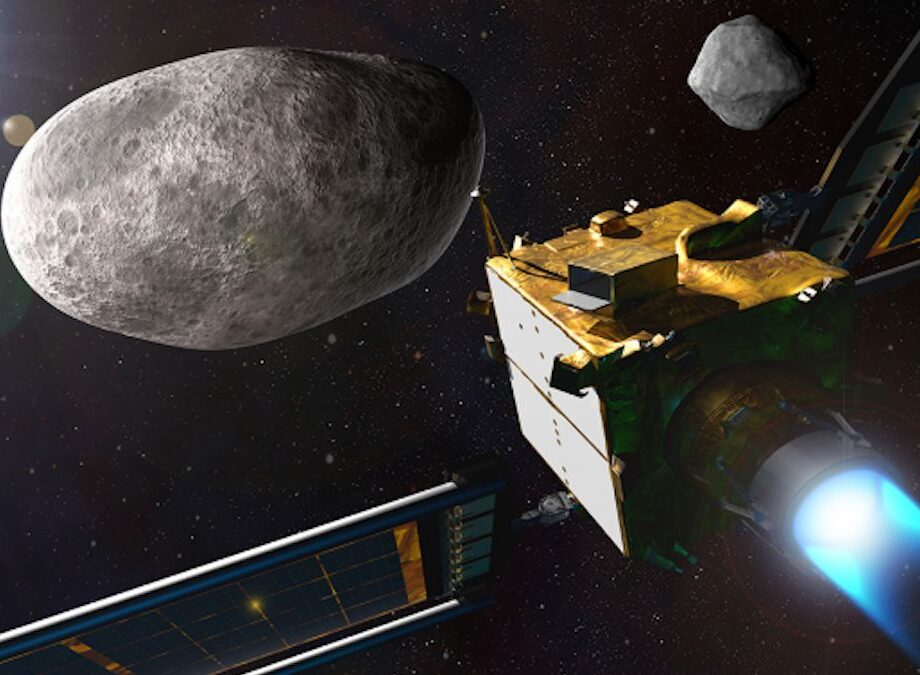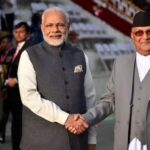Why this asteroid mission is stirring a satellite security debate
China plans to launch a demonstration that will strike a near Earth asteroid by 2030. The mission will use two spacecraft, one kinetic impactor that collides with the target and a companion that observes the hit and measures the outcome. Chinese officials frame the effort as a step toward planetary defense and future use of asteroid resources. The announcement arrives after NASA’s 2022 DART test showed that a direct hit can nudge a small asteroid off its course. It also lands in the middle of an intense discussion about the security risks of dual use space technology.
- Why this asteroid mission is stirring a satellite security debate
- What China plans to launch and when
- How asteroid deflection works and what DART proved
- Dual use overlap with anti satellite capabilities
- China’s expanding space network and tracking tools
- International reactions and competing narratives
- Economic stakes, from planetary defense to resource extraction
- What would reduce satellite risk
- What to watch before 2030
- The Bottom Line
Analysts who watch China’s space sector say the same tools needed to find, close in on, and hit a fast moving object in deep space can improve the ability to threaten satellites in Earth orbit. Precision tracking, autonomous guidance, and high velocity intercept skills translate across missions, even if the goals differ. That overlap is why Washington and several allied capitals are watching the asteroid test closely. Commentaries in Asia Times and other outlets highlight a phased plan: a kinetic impact in 2030, a propulsion based slow push test by 2035, and mastery of asteroid orbit technology by 2045. The arc links planetary defense with the growth of a deep space economy.
China has expanded its detection and tracking toolkit since the mid 2000s. Projects include the China Compound Eye radar concept and new survey telescopes that help spot and characterize near Earth objects. Beijing has also invited more than 40 countries and organizations to take part in research and monitoring linked to the mission. The United States, meanwhile, has issued warnings about Chinese counterspace capabilities, arguing that some of the same technologies could be adapted for anti satellite roles. Chinese officials and state media reject the accusation and say the country is pursuing space safety, science, and development.
What China plans to launch and when
The planned mission uses a pair of spacecraft. One will act as the kinetic impactor, aiming to strike a small near Earth asteroid at high speed. The second craft will fly nearby to document the approach, collision, and aftermath. By tracking how the asteroid’s motion changes and by imaging the impact crater and ejected material, the observer can reveal how momentum transfer really works on a real rock in space. That data matters for any future plan to deflect a hazardous object.
Senior scientists linked to China’s planetary defense work have described the effort as a national demonstration with global benefits. The target has not been publicly identified, and specific spacecraft designs have not been released. The observing companion is a notable difference from NASA’s DART, which relied on a small cubesat for brief images and will be followed by Europe’s Hera spacecraft years later. China intends to collect more measurements in the immediate aftermath of the hit.
Key milestones through mid century
- 2030: Kinetic impact demonstration on a near Earth asteroid using an impactor plus an observer.
- 2035: A propulsion based deflection test that rendezvous with a small body and gently changes its orbit using thrusters.
- 2045: Mastery of asteroid orbit technology, intended to support both defense and resource utilization.
- Ongoing: Invitations to more than 40 partners for joint research and observation, along with expansion of detection networks such as radar and telescopes.
Chinese planners link these steps to the rise of a deep space economy, where in space resources and infrastructure reduce mission costs and enable longer range exploration. That blend of defense, science, and commerce is why the asteroid mission carries weight far beyond a single collision experiment.
How asteroid deflection works and what DART proved
A kinetic impactor nudges an asteroid by transferring momentum. The spacecraft slams into the target at several kilometers per second. The effect is amplified when debris sprays out from the crater, carrying momentum in the opposite direction and giving the asteroid an extra kick. Deflection is tiny in the near term. Over months to years, a small change in velocity can add up to a large change in position along the orbit.
NASA’s DART mission struck Dimorphos, a small moon of the asteroid Didymos, in September 2022. The hit shortened the moon’s orbital period by more than half an hour, far more than the minimum success threshold. The result showed that momentum from ejected debris can greatly increase the total deflection. Europe’s Hera spacecraft will arrive to map the crater and refine models of the impact physics. China’s plan to fly an observer immediately with its impactor aims to gather many of those measurements right away. That can help answer key unknowns that shape mission design, such as the target’s porosity, internal structure, and surface cohesion.
Precision navigation is the hardest part. The target will appear as a dim point until late in the approach. The impactor must autonomously guide itself during the final minutes using optical navigation and high rate imaging, since the radio signal round trip time is too long for joystick control from Earth. Guidance, navigation, and control software must lock onto the target despite glare, motion blur, and uncertain shape. The observer needs coordinated trajectories and timing to stay safe yet close enough to document the event.
Dual use overlap with anti satellite capabilities
Hitting an asteroid and striking a satellite require different mission setups, but they share core skills. Both demand precise tracking of moving objects, autonomous terminal guidance, and hit to kill accuracy at high relative speeds. The associated ground infrastructure, like powerful radars and optical networks, improves the overall ability to find, follow, and model objects in space.
Anti satellite weapons have existed since the Cold War. The United States shot down a satellite in 1985 using an air launched missile and intercepted a failed satellite in 2008 with a ship fired missile. China carried out a direct ascent test in 2007 that destroyed the Fengyun 1C weather satellite, creating thousands of trackable fragments that lingered for years. India conducted its Mission Shakti intercept in 2019. Russia destroyed Kosmos 1408 in 2021, generating a debris cloud that forced astronauts on the International Space Station to take shelter. Destructive tests leave debris that can threaten satellites and crewed missions for a long time, especially at higher orbits.
In recent years, many governments and the United Nations have pressed for a halt to debris creating anti satellite missile tests. A growing group of countries has pledged not to conduct such tests. Even with those pledges, non destructive counterspace options still exist, including jamming, cyber intrusions, laser dazzling or damage to sensors, and close approach proximity operations. The concern around the asteroid mission is not that it will lead directly to an anti satellite test, but that it will strengthen underlying capabilities that can be applied in many ways.
What dual use means in practice
- Autonomous guidance algorithms that track and home in on small objects.
- Optical navigation and high precision imaging for terminal approach.
- Hit to kill kinetic vehicle design and structural survivability to the last instant.
- Proximity operations planning that keeps an observer spacecraft safe while flying near a target.
- Ground radar and optical networks, such as China’s Compound Eye concept, that improve detection and tracking accuracy.
- High fidelity modeling and mission rehearsal tools that shorten development times for both civil and military missions.
Space powers build these capabilities for different reasons. Once they exist, they are hard to separate by mission category. That is the essence of the dual use dilemma raised by the asteroid test plan.
China’s expanding space network and tracking tools
China’s satellite fleet has grown rapidly. By mid 2025, open source tallies placed more than 1,060 Chinese satellites in operation, second only to the United States. The total includes navigation and timing satellites, weather and Earth observation systems, broadband and data relay platforms, and a significant number of imaging and electronic intelligence payloads. Commercial constellations like Thousand Sails and G60 are adding hundreds of spacecraft that can support both civilian connectivity and government communications.
Military and dual use satellites are central to this growth. The Yaogan series provides optical, radar, and electronic intelligence data for the People’s Liberation Army. The Gaofen and Jilin imaging networks, nominally civilian or commercial, deliver high resolution pictures that have clear military applications. Civil military integration policy allows technology and data to move across sectors, making it difficult for outside observers to draw bright lines between civilian and defense functions.
Tracking and detection capacity is expanding as well. Chinese research groups have publicized the Compound Eye radar effort and new telescopes for detecting near Earth objects. Reports from 2025 noted that some Chinese satellites rehearsed close approach maneuvers, a sign that on orbit rendezvous skills are advancing. Those same skills support asteroid rendezvous, debris removal experiments, inspection missions, and potentially offensive proximity operations.
What the numbers say
- More than 1,060 operational Chinese satellites by July 2025, with growth accelerating.
- Over 150 satellites designated for military use and many hundreds more that are dual use.
- Large low Earth orbit broadband constellations under construction that can scale to thousands of spacecraft.
- Expanded radar and telescope projects to support detection, tracking, and planetary defense research.
This scale of infrastructure shapes the strategic picture around any new deep space mission. It also provides the technical backbone for an asteroid impact test and follow on resource or defense operations.
International reactions and competing narratives
US officials and analysts warn that China’s space growth includes counterspace programs and satellite proximity skills that could threaten critical services. Commentaries in Western media and defense circles have tied the asteroid mission to those concerns, even as they acknowledge the value of better planetary defense. Chinese state media reply that the United States is overstating risks to justify its own military expansion in space.
Global Times, a state run newspaper, described the asteroid mission as a responsible scientific effort and accused Washington of trying to control the narrative. In its editorial framing, the paper sought to recast the debate as one about hegemony rather than science or safety.
Global Times editorial writers argued that “The outer space belongs to no single nation, and there certainly is no room for hegemony.”
Examples of public cooperation also appear. After India’s space agency completed an on orbit docking test between two satellites, a Chinese spokesperson in New Delhi offered congratulations. That message was a reminder that Asian space programs compete in some areas while still exchanging public praise and data in others.
Yu Jing, a Chinese spokesperson in India, said: “Congratulations to India ISRO for successful docking of satellites under the SpaDeX mission!”
The asteroid impact plan will sit at the center of these competing narratives. Supporters argue that more countries practicing deflection strengthens global safety. Critics worry that the line between defense and offense in orbit is getting thinner.
Economic stakes, from planetary defense to resource extraction
Asteroids are potential hazards and potential assets. Many contain water that can be split into oxygen and hydrogen for propellant, or used directly to support life support systems. Some are rich in metals that can be processed for in space manufacturing. If missions can safely reach, work on, and move small bodies, it becomes easier to build depots, repair craft, and reduce dependence on launches from Earth.
Chinese plans link the asteroid impact test to a longer agenda for resource utilization. A propulsion based deflection test by the mid 2030s would require extended rendezvous and controlled thrusting, the same skills needed to park equipment on or near a small body for extraction or construction. Mastery of asteroid orbit technology by 2045 fits that picture. The timeline aligns with expectations that commercial services for in space transport, refueling, and manufacturing will mature. That is why the asteroid mission is framed as both a planetary defense step and a down payment on new economic activity in deep space.
What would reduce satellite risk
Transparency lowers suspicion. Clear target selection, early publication of mission geometry, and defined safety margins can help separate a deflection test from anti satellite concerns. An observing spacecraft that shares data in real time with international partners would further increase confidence.
Norms matter. A strong, explicit commitment to avoid debris creating anti satellite tests, reinforced by public support for United Nations efforts to curb such trials, would remove a major source of worry. Governments can test high velocity intercept technologies against non orbital targets or inert masses on escape trajectories, keeping the focus on planetary defense rather than on orbit targets.
Closer cooperation through existing planetary defense bodies would also help. The International Asteroid Warning Network and the Space Mission Planning Advisory Group coordinate discovery, risk assessment, and mission concepts. If China channels more data and design details through these forums, and if other major space powers reciprocate, the global community gains safety and confidence without blocking scientific progress.
What to watch before 2030
Several milestones will indicate how the mission is taking shape and how the debate evolves. Space watchers will track the target announcement, the emergence of spacecraft specifications, and the build out of tracking networks. They will also look for signs of expanded international participation in the observing campaign and for evidence that norms on debris creating tests are solidifying.
- Public identification of the asteroid target and its key properties such as size, rotation, and composition.
- Design reviews or disclosures about the impactor’s guidance and imaging systems and the observer’s instruments.
- Demonstrations of autonomous navigation and terminal guidance on other deep space missions or technology flights.
- Construction updates on radar and telescope projects tied to near Earth object detection inside China.
- Statements about data sharing, safety constraints, and collaboration with international planetary defense networks.
- Progress on heavy lift launch vehicles in the Long March family that can carry deep space payloads.
- Broader moves by major space powers on anti satellite test pledges and space traffic coordination.
The Bottom Line
- China plans a two spacecraft asteroid impact test by 2030, with an impactor and a dedicated observer.
- The mission follows NASA’s DART success and aims to advance planetary defense and future resource use.
- Experts see dual use overlap between deep space intercept skills and anti satellite capabilities.
- Beijing outlines a phased plan through 2045 that includes propulsion based deflection and asteroid orbit mastery.
- US officials warn about counterspace risks, while Chinese state media says the mission supports global safety.
- China’s satellite fleet and tracking infrastructure are expanding fast, enabling both civil and military missions.
- Destructive anti satellite tests by several countries in the past created long lived debris and spurred calls for bans.
- Transparency, data sharing, and commitments against debris creating tests could ease satellite security concerns.
- Watch for target selection, spacecraft design details, deep space navigation demos, and collaboration announcements.
- The outcome will shape both planetary defense readiness and the balance of power in space technology.












